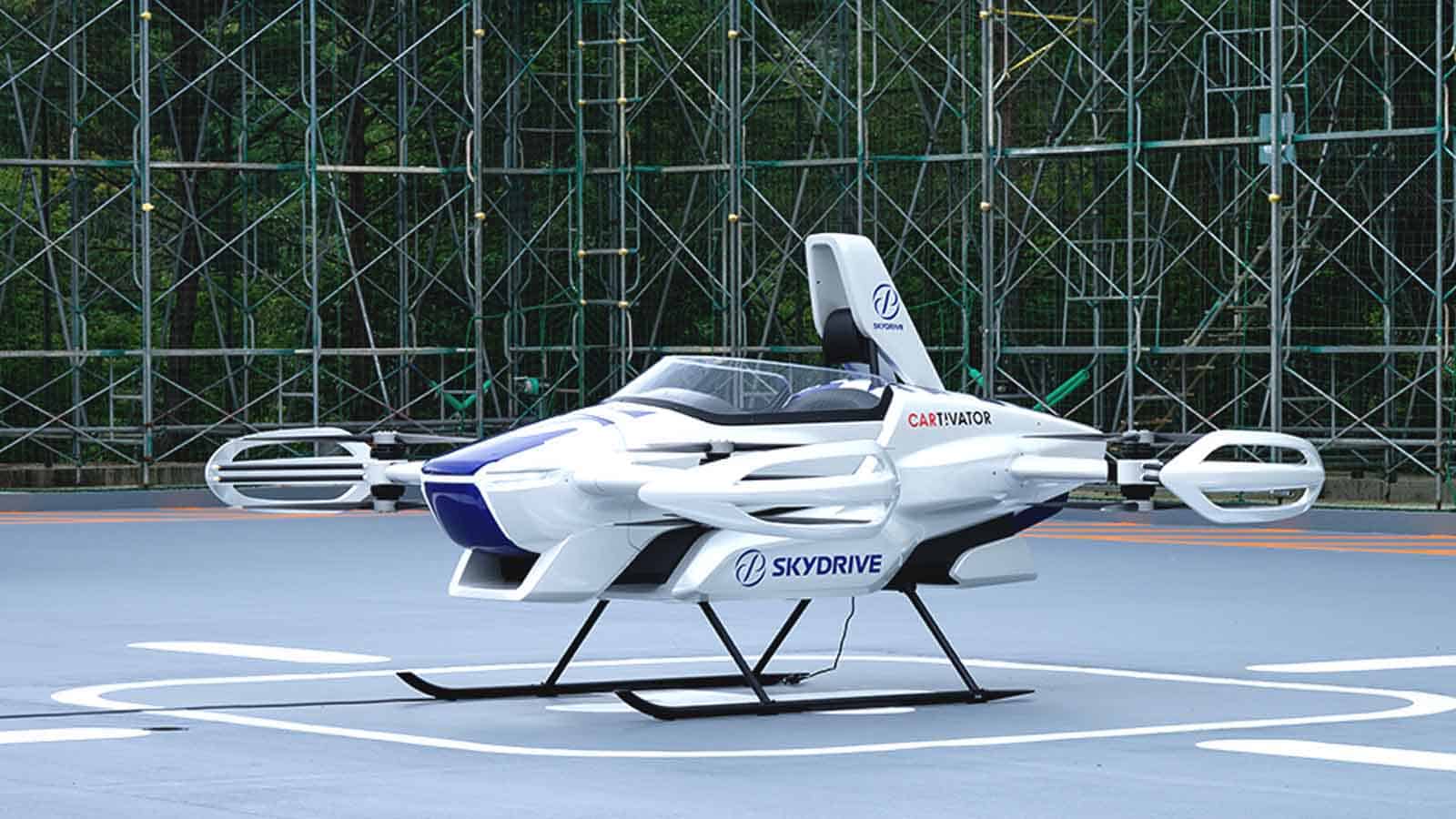
Just a heads up, if you buy something through our links, we may get a small share of the sale. It’s one of the ways we keep the lights on here. Click here for more.
From rickshaws and horse-drawn carriages to air balloons, ships, helicopters, drones, and cars, history taught us that significant changes in human mobility don’t happen too often.
Fast forward to 2020, approximately a century after Ford started mass producing its Model T, and we are at the brink of another disruption in the mobility segment. This time, it appears we are set to reach new levels as roads and highways are destined to be obsolete. Yes, that’s what the people at SkyDrive are hoping to achieve with their flying taxi.
Their wildly optimistic plans predict that their flying taxis will hit the sky as early as 2023. Just a reminder, they conducted the first public test of their flying car this August.
Tomohiro Fukuzawa, the CEO of the Tokyo based SkyDrive Inc., firmly believes that by 2050 anyone will be able to reach any given destination in Tokyo in just ten minutes or less. To put this in a better perspective, Tokyo is spread over 850 square miles and is home to almost 14 million people.
The source of their optimism
Their eVTOL, called SD-03, is the reason why everyone at SkyDrive Inc. is so optimistic about the project. The four-meter long craft is made of durable materials (aluminum, carbon fiber, etc.) and propelled by four motors using a lithium-ion battery. The SD-03 needs five to ten minutes to reach a speed of about 31 mph.
Aside from that, there is not much information available about SD-03. In that regard, Fukuzawa explained that they don’t want to explain more about their flying car’s other technical aspects because it gives them an edge over their competitors. Other companies that also develop flying cars include Airbus, Boeing, Porsche, etc.
Furthermore, they are backed by a large group of investors, including the Japanese government, from whom they enjoy massive support. Just this year, they managed to accumulate more than $56 million in investments.
The Cargo Drone
Earlier this year, they unveiled their commercially available drone dubbed the Cargo Drone. As the name suggests, it is designed to transport payloads as heavy as 65 pounds over distances as far as 2 miles from its start point. The Cargo Drone can be piloted or can fly autonomously to a pre-programmed destination. The drone can take payloads to locations that are hard to reach via road or any other means. It will be available commercially via a monthly subscription of $3,600.
The flying taxi service’s initial plan is to operate between locations such as Kobe airport and Kansai. Down the line, they plan to add new locations such as the major tourist attractions in Tokyo. Typically those flights will last less than ten minutes and will include one passenger and a pilot.
What do you think? Do you think the world is ready for flying cars? Let us know down below in the comments or carry the discussion over to our Twitter or Facebook.
Editors’ Recommendations:
- Tesla calling its driver-assist feature “self-driving” is misleading, says new report
- Tesla Model Y owners are finding questionable wood trim under the hood of their vehicles
- Digital cockpits in cars are here to stay and will become the standard this decade
- Ford made a nutty electric Mustang with 1,400-horsepower and seven electric motors






























